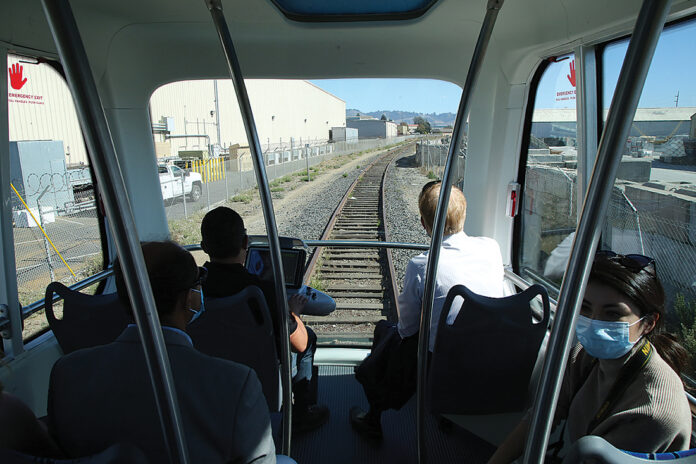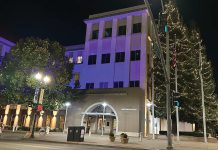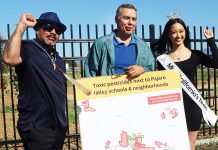
SANTA CRUZ COUNTY—Voters throughout Santa Cruz County have begun receiving their ballots for the June 7 election, which they will use to select a Governor, as well as a congressional representative and state senate and assembly member.
The ballots are marked with a large blue “XO” on the flap. Early voting begins May 9.
Perhaps the most controversial item on the ballot—and certainly the most contentious issue facing county residents in years—is Measure D, also called “Santa Cruz County Greenway Initiative.”
This measure, if approved, would change the County’s General Plan—the jurisdiction’s blueprint for meeting the community’s long-term vision for the future—to focus on the development of a multi-use bicycle and pedestrian trail between the San Lorenzo Bridge in Santa Cruz and Lee Road in Watsonville, while “railbanking” the existing rail line. Santa Cruz County Counsel Jason Heath’s impartial analysis says the plan would include removal of the existing rail tracks.
The measure would add language to the General Plan that supports building the trail, while removing language that relates to rail services, both freight and passenger.
Proponents—who call themselves Santa Cruz County Greenway—say the 32-mile trial is fully funded, and can be built now. It would be accessible to all county residents.
They say it would reduce traffic and air pollution, while giving residents a safe, healthy way to commute to work and school. It would also preserve the natural landscape of the area.
Measure D supporters also say that long-standing plans to create a passenger rail system are too expensive, and would result in the “industrialization” of the county’s rail corridor, requiring retaining fences and the removal of hundreds of heritage trees.
“Since purchasing the corridor 10 years ago, only one mile of the 32-mile trail has been built,” Greenway states in the county’s voter information. “Santa Cruz County does not have the ridership—or $1.3 billion—needed to replace nearly all tracks and bridges, build stations and parking lots, and operate a passenger rail line.”
Greenway also says that the “enormous” costs involved with building a rail line don’t include the engineering required to restore the Capitola Trestle and the Harkins Slough crossing.
The other side of the tracks
Opponents—called No Way Greenway—say the measure is “deceptive,” and that railbanking would bring to a permanent halt the county’s existing plans to build a combination rail/trail corridor.
“Nationwide it is unprecedented for rail service to return once tracks are removed and paved over,” opponents state. “Measure D uses slick ‘green’ packaging to conceal its true aim of ending transit options.”
Heath says that Greenway’s plans hinge on the approval of railbanking, which is a lengthy process that involves the federal government, freight operators and the RTC.
Failing that, Heath says, Greenway’s plans would be unfeasible.
“…the General Plan is a planning document and does not mandate that proposed infrastructure be built. Therefore, adoption of the Greenway Initiative does not guarantee that the Greenway will be constructed,” he wrote.
Loss of a future passenger rail would, opponents say, set the county back on its goals of reducing greenhouse gasses and vehicle traffic by taking away a viable source of alternative transportation.
They also dispute assertions that the Greenway plan is fully funded, and add that the trail is already under construction. This includes completed segments in Watsonville and in Santa Cruz.
The opponents say that Measure D would stop all construction of a trail immediately, with none planned for the immediate future.
Those that support rail service worry that the measure would remove access by Roaring Camp to the national rail network, thereby harming or destroying that business.
The last day to register to vote in the June 7 election is May 23. Voters can register online at registertovote.ca.gov or pick up a card at any post office, library, city hall or county elections office. There are 17 ballot drop boxes installed throughout the county. Ballots postmarked on or before June 7 and received by June 14 will be considered received on time under California state law. For information, call 454-2060 or visit www.votescount.us.









